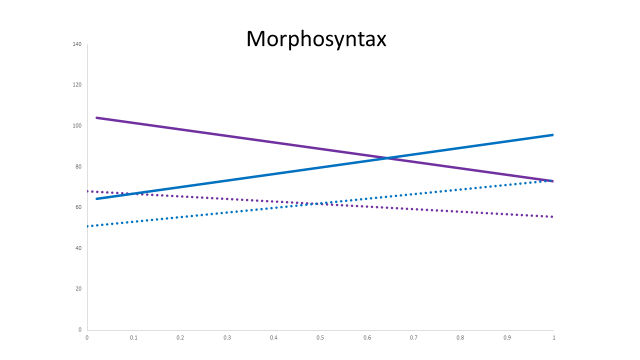Last year I had a chance to present this project at Asha, and the paper was published this year in JSLHR. It’s open access so any one can read it! (though when things are behind a paywall and I am an author I am happy to send you a copy, so just ask).
This is a follow up paper to one that is still in development, but we hope to get that one out too. I’ve written about the bilingual delay before, here and here. And my biggest concern about this myth is that often schools, special educators, and yes, SLPs, use this to deny needed services to bilingual children. I so often hear or see comments along the lines of:
- Yes, they do show low skills in both languages, but that’s normal, because of the “bilingual delay.”
- We expect bilingual kids to show delays in both languages, let’s give them more time
- That pattern of low scores in L1 and L2 is what I often see and it’s normal.
THESE ARE ALL MYTHS!!!
It can APPEAR that bilinguals are delayed if they are tested in only one language. In group studies children who are in the most balanced exposure group (around 50/50 exposure) have lower scores than their more monolingual counterparts. But, these are based on AVERAGES. What happens if we look at scores at the individual level? That’s what we did. Here are scores for 600 bilingual Spanish-English speaking US children. The solid lines represent 500 typical kids, and the dotted lines represent 100 kids with DLD. These are all standard scores with a mean of 100 and a SD of 15. You can see that the Spanish scores (in purple) go down as they have more exposure to English; and the English scores (in blue) go up. So, yes, it does look like the kids in the middle (who have more balanced exposure) are low in both.

But, let’s look at individual scores. Here, we show the English and Spanish scores for kids who have more than 90% exposure to English (blue bar). You can see that all but one score better in English. We see the same general pattern for Spanish (pink bar) most of the kids with a lot of Spanish exposure do better in Spanish. What about the kids in the middle– the yellow bar. Well, it’s 50/50! Some kids do better in Spanish and some do better in English!

So, we then went back to the data and graphed the kids again. This time in their best language only. So, if their score was higher in English, we put in that score into the graph, and if it was higher in Spanish we entered that score. Here are the results. The lines are essentially straight. And there are no significant differences associated with exposure to language. For typical kids, the average scores are right at 100 across the board. And for kids with DLD, their scores average around 60, again across the board. So, I would expect a typical child to show scores in the normal range in at least one of their languages. Kids with DLD will show low scores in both. And notice, that their better scores are within the same range as more monolingual kids, so again they can handle bilingualism.

So, please stop perpetuating myths. There is no such thing as a bilingual delay. We included kids with early exposure and late exposure to two languages, and kids with the whole range of current exposure. There is no bilingual delay.

#1 by Anonymous on December 4, 2023 - 6:54 am
So much gratitude that you have shared (and continuously share) this important, robust research. As a clinician I will use this in my arsenal to combat this myth, particularly when “wait and see” is misguidedly advocated for a child.